In March of 2023, the Nissan Qashqai e-POWER shot to the top spot as the best-selling car in Ireland. One of the main reasons behind this was probably because you didn’t have to plug it in for it to re-charge. The battery is a 2.1kWh unit which receives regenerated energy from the 1.5-litre 3 cylinder petrol engine.
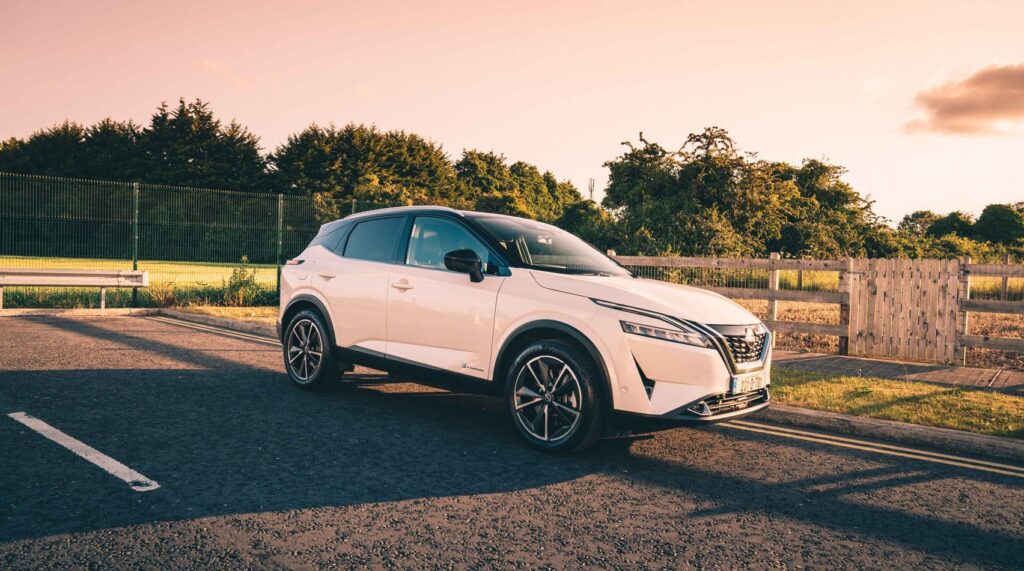
Special mention : Nippy in the city with that low down torque which moves it along very nicely, steering is well weighted to match. Plenty of boot space. Wireless Apple Car play hooks up seamlessly. New front end design look great.
Needs work : Graphics could be better on the sat nav. I’ve always loved a pano roof but not when they don’t open. Steering wheel plastic not too far off high quality but just enough to notice. Rear bench passengers could use a toucch more knee room. Wireless charging looses its connection too easily.
| 156 BHP | Petrol / Auto |
| 0-100 km/h in 7.9 seconds | Road Tax €200 |
| Price: from €44,000 As specc’d €50,400.00 | Boot Space 504 – 1,422 litres |
The latest Qashqai is bigger than the second-generation model it replaces and it shows when accessing the rear doors. Nissan have engineered the opening so you can get a full 85 degrees of the door ajar, so getting a child into their seat is made much easier. The boot floor is reversible, and this is where the wipe-clean surface comes in handy, so you can easily wipe off all the sand from the dog that’s just rolled in everything it could after a swim in the sea. You can easily take it out, shake off all the dried in muck, flip it so you now have the carpeted side to stop bags and items rolling around. All Qashqai models come with the multi-function steering wheel with reach and rake adjustment, a front centre armrest, front cupholders and 60:40 split-folding rear seats.

Nissan has clearly worked hard to boost the practicality of the Qashqai, with an extra 49 litres of storage space over the outgoing model. There are standard fit luggage boards, which separate the boot into individual sections, so you can store extra bits and pieces underneath (this would come in very handy were it a plug-in hybrid but it’s not).
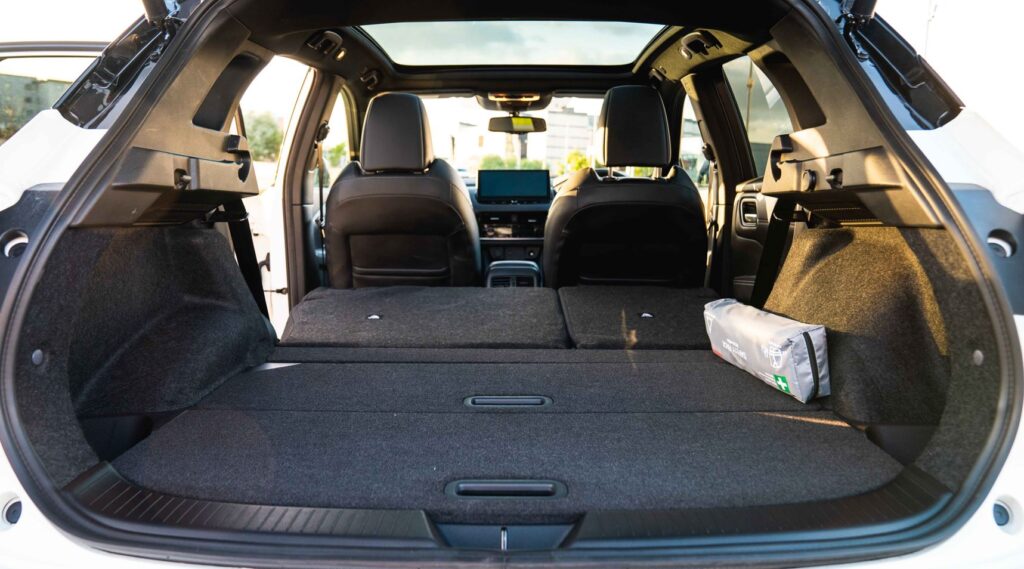
The Qashqai has a higher boot lip but loading awkward items isn’t that much more awkward. It’s a shame however that they haven’t fitted levers in the boot so you can just quick pull the 60/40 seats down, the little things that make life just that bit easier. The Quashqai has around 1,422 litres of boot space with the seats flat, less than in a Karoq, Sportage or Tucson.
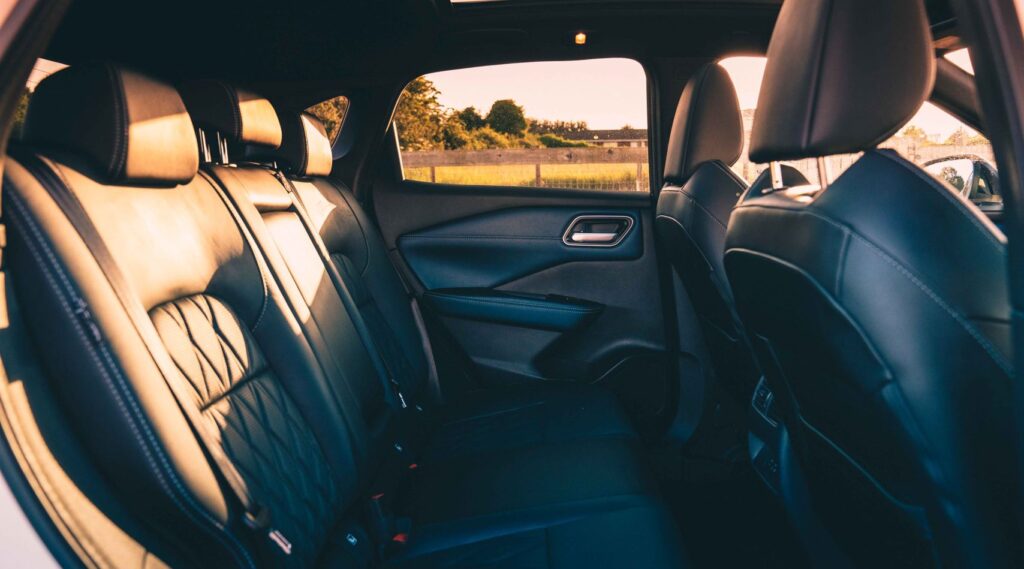
The maximum braked trailer towing capacity ranges from 1,400kg for the front-wheel-drive 138bhp model, to 1,800kg for the more powerful 156bhp version.
Nissan has updated the Qashqai’s CMF platform (now called CMF-C) to adjust its ability to cope with hybrid tech. The Qashqai is 48% stiffer and lighter which helps improve refinement and comfort by using aluminium and composite materials. The steering has also been modified, with the electric assistance motor moved closer to the rack to reduce friction.
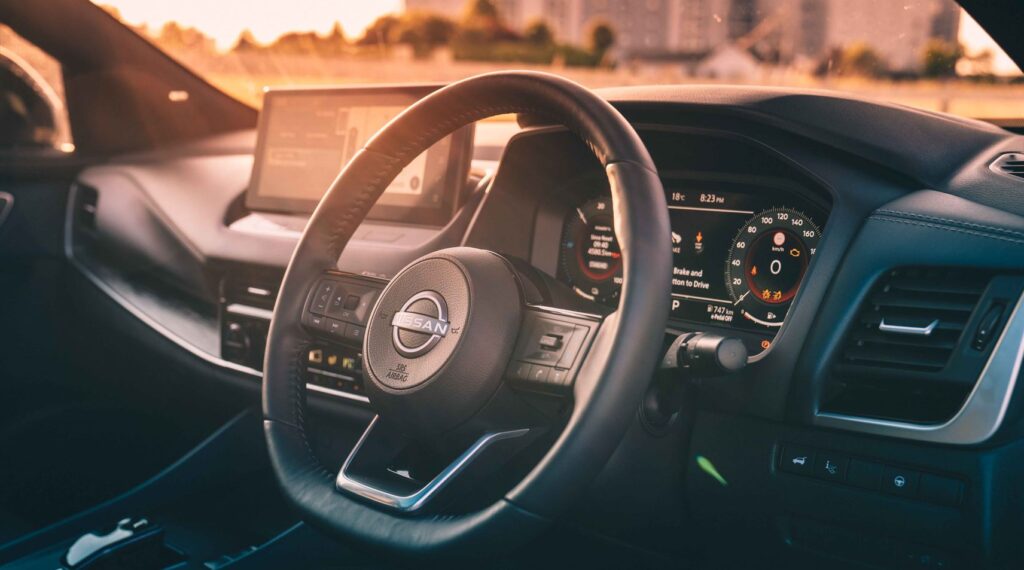
Inside the cabin they’ve updated the materials to boost perceived quality, with soft-touch textures on the dash and steering wheel (which is only slightly off a luxury feel). The infotainment system is much improved over the previous generation and works seamlessly with wireless Apple Carplay. On start-up it grumbles the hybrid engine into life and fidgets a little over small bumps but does have improved body control when travelling at speed and getting there in the e-Power takes around 7.9 seconds to get from 0-100 km/h.
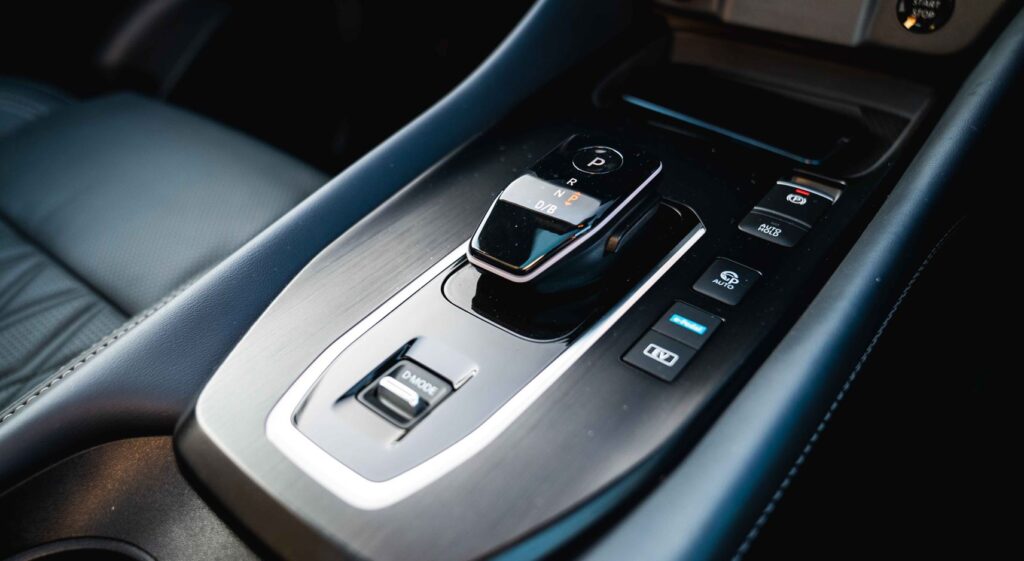
The e-motor is powered by a lithium-ion battery which stores the energy recovered while braking. Nissan’s clever e-Power tech uses the 1.5-litre petrol engine to generate charge for the lithium-ion battery, which then powers the electric motor to drive the wheels. As long as it has had time to warm up, it’s smooth off the line with smooth acceleration from low speed and decent performance. You also get the e-pedal which increases the energy regeneration when you lift off the throttle but I wouldn’t recommend using it all of the time as it may leave your passengers feeling a little sea sick. It’s not a true ‘one-pedal’ mode like you get in the fully electric Ariya or Leaf. It slows the car down to congested traffic speeds but won’t bring you to a full stop.
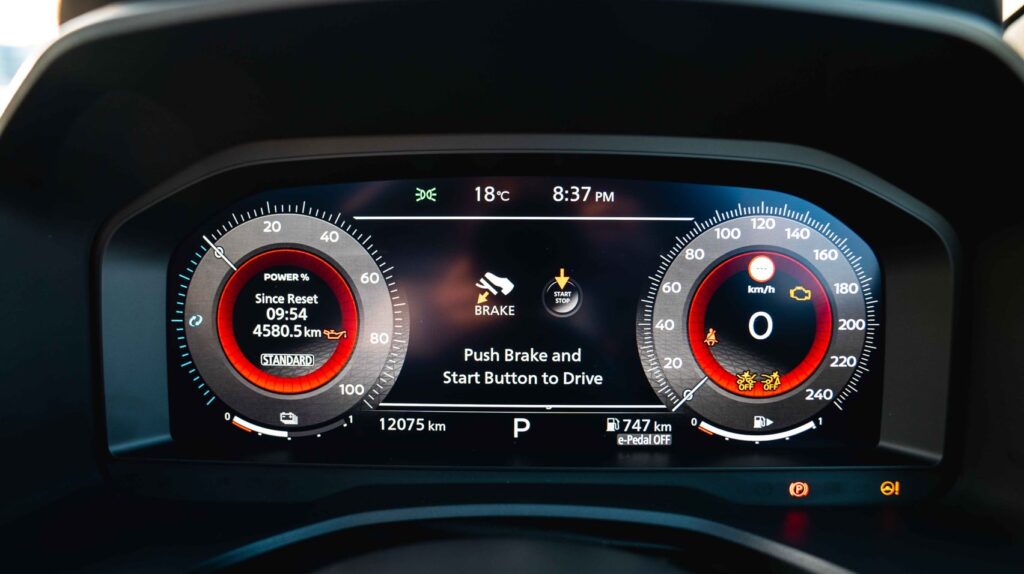
Nissan has upgraded the in-car tech, there’s a 12.3-inch digital driver’s display and the top-of-the-range gets a head-up display. The screen responds well, graphics are easy to read and menus easy to navigate. The process from typing a postcode on the touchscreen to a fully loaded route giving instructions takes only a few seconds. Physical controls for the volume and the main shortcuts come in handy, while the screen’s position high on the dash means it’s easy to use on the move.

The top-spec trim includes a host of luxury kit such as quilted leather upholstery, electrically-adjustable front seats with heating, massage and memory functions, a heated steering wheel, a fixed glass roof and an automatic tailgate. The best spec comes with the 12.3-inch digital cockpit central touchscreen, wireless Apple CarPlay connectivity, front parking sensors and built-in sat-nav (for when you’re out of mobile coverage).
